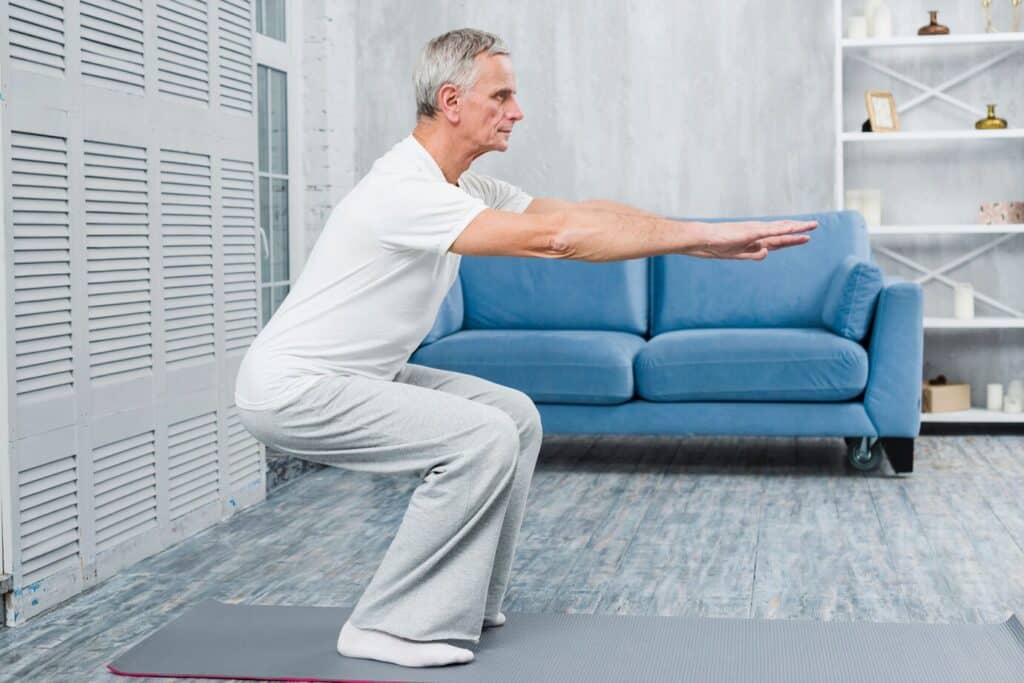Essential Aging in Place Checklist for a Safe Retirement
Assess your home for hazards like loose rugs and poor lighting to guarantee a safe retirement while aging in place.
To reduce strain, Westmont of Brentwood recommends installing grab bars, using non-slip mats, and keeping essential items within easy reach.
Smart technology can enhance your independence with devices that control lights and medication.
Finally, fostering social connections is crucial for emotional well-being.
For more insights on enhancing your home and lifestyle, keep exploring these essential strategies with Westmont of Brentwood.
Aging in Place Checklist: A Guide to Safe and Comfortable Living
As you navigate the journey of aging in place, it’s vital to create a safe and comfortable environment that meets your evolving needs. Start by evaluating your space for hazards like loose rugs or poor lighting, which can lead to falls. Make sure that essential items are within easy reach to minimize strain. To enhance safety, incorporate assistive devices like grab bars and raised toilet seats. Consider your daily routine and how you can make tasks easier, whether it’s using a shower chair or a reacher tool. Don’t forget to foster social connections; engaging with others can significantly improve your well-being. Additionally, ensure that your apartment has non-slip mats in wet areas to prevent slips and falls. By taking these steps, you’re preparing your home and enriching your quality of life as you age gracefully.
Aging in Place Home Modifications
Creating a safe and comfortable living environment involves more than just removing hazards; it often requires thoughtful modifications to your home. Start by installing grab bars in bathrooms and hallways to provide stability. Consider adding non-slip mats to prevent falls and ensuring your lighting is bright enough to illuminate all areas. Widen doorways and hallways if necessary, making navigating easier with mobility aids. Lower kitchen counters can make meal prep more accessible.
Additionally, consider rearranging furniture to create clear pathways. These adjustments enhance safety and promote independence, allowing you to enjoy your home for years to come. By making these modifications, you’re fostering an environment that truly supports aging in place, similar to the personalized care plans offered in senior living communities.
Technology Solutions: Smart home devices for increased independence
Though aging in place can present challenges, integrating smart home devices can greatly enhance your independence and safety. Devices like smart speakers allow you to control lights, thermostats, and alarms with your voice, making daily tasks easier. Smart doorbells with cameras can help you see who’s at the door without getting up. Automated medication dispensers guarantee you never miss a dose, promoting your health. Additionally, motion-sensor lights can illuminate your path at night, reducing the risk of falls. By embracing these technologies, you create a safer living environment tailored to your needs. This fosters independence and reassures your loved ones that you’re well cared for, enhancing your overall quality of life. Furthermore, the integration of smart technology in your home can lead to a more proactive approach to safety and security.
Benefits of Aging in Place
Aging in place offers numerous advantages that can significantly enhance your quality of life. Staying in familiar surroundings promotes emotional well-being, reduces stress, and fosters independence. You can maintain strong social connections with friends and family, creating a greater sense of community. Additionally, aging in place often proves more cost-effective than relocating to assisted living facilities. Engaging in community events can further support social connections and enrich your daily experiences.
| Advantage | Benefit |
| Emotional Well-being | Familiarity reduces stress |
| Social Connections | Stronger relationships |
| Cost-Effectiveness | Lower expenses than assisted living |
Maintaining Independence: Empowering seniors to control their daily lives
Maintaining independence is crucial for seniors who want to feel in control of their daily lives, as it fosters confidence and self-esteem. To empower seniors, consider creating a structured daily routine with enjoyable activities and social interactions. Encourage using assistive devices, which can enhance mobility and safety, allowing seniors to navigate their surroundings easily. Additionally, promote participation in community events to strengthen social connections and combat feelings of isolation. Listening actively to their needs and preferences is essential, as well as ensuring they have a voice in decision-making. By providing resources and support tailored to their lifestyle, you can help seniors maintain their independence, enhancing their overall well-being and quality of life.
Aging in Place Statistics
As you consider your options for senior living, it’s essential to understand the statistics surrounding aging in place, highlighting the growing preference among older adults to remain in their homes. Recent studies show that over 90% of seniors wish to age in place, valuing independence and familiarity. Additionally, nearly 80% of seniors believe their home is where they feel most comfortable and secure. As the population ages, the demand for supportive services that enable this choice increases. Recognizing these trends can help you better serve your loved ones. By understanding these statistics, you can advocate for the resources and modifications needed to create a safe and nurturing environment, ensuring everyone can enjoy their golden years in the comfort of home.

How Many Seniors Want to Age in Place: Key survey results
Many seniors strongly desire to remain in their homes as they age, reflecting a deep-rooted preference for independence and familiarity. Recent surveys reveal that approximately 90% of older adults want to age in place, showcasing their commitment to maintaining their lifestyle. Here’s a snapshot of key findings:
| Survey Aspect | Percentage | Insights |
| Desire to Age in Place | 90% | Strong preference among seniors |
| Current Homeowners | 80% | The majority already live at home |
| Needing Modifications | 60% | Many require minor adjustments |
| Family Support | 70% | Families play a vital role |
| Community Services | 75% | Importance of nearby resources |
These statistics underscore the significance of creating supportive environments for seniors wishing to remain in their cherished homes.
Ultimately, creating a safe and supportive home for your golden years isn’t just about modifications; it’s about embracing the beauty of independence. Picture yourself enjoying a quiet afternoon, knowing your space is tailored to your needs. At Westmont of Brentwood, we believe that by taking proactive steps now, you can guarantee a fulfilling retirement surrounded by the comforting familiarity of home. Remember, countless seniors share this journey with you, all working toward the same peace of mind and joy in their everyday lives. For more information or assistance, feel free to call us at 925-516-8006.
Discover the level of care you or your family member requires. What Level of Care Do You Need?
FAQs on Aging and Aging in Place
What are the 5 pillars of aging in place?
The five pillars of aging in place include housing, health and wellness, transportation, social engagement, and financial security. A safe and accessible home is essential to support mobility and daily activities. Health and wellness focus on maintaining physical and mental well-being through medical care, nutrition, and exercise. Reliable transportation ensures continued independence and access to services, while social engagement helps prevent isolation and promotes a sense of purpose. Lastly, financial security ensures individuals can afford the care and resources needed to maintain their quality of life as they age.
What is required for a person to successfully age in place?
Successful aging in place requires a combination of a safe living environment, access to healthcare, strong social support, financial stability, and mobility solutions. Home modifications such as grab bars, stairlifts, and non-slip flooring can help ensure safety. Access to healthcare services, including in-home care or telemedicine, is vital for maintaining well-being. A strong support system, including family, friends, and community resources, helps combat loneliness and provides assistance when needed. Additionally, financial planning is crucial to cover living expenses, medical care, and home adaptations.
What happens to your body in your 70s?
In your 70s, the body experiences natural aging-related changes, including muscle loss, slower metabolism, and decreased bone density. Joints may become stiffer, leading to mobility challenges and an increased risk of falls. The immune system tends to weaken, making individuals more susceptible to illnesses and infections. Cognitive function may decline slightly, though staying mentally active through reading, puzzles, and social engagement can help maintain sharpness. While aging brings changes, a healthy lifestyle that includes exercise, a nutritious diet, and regular medical check-ups can help sustain overall well-being.
What are the 4 pillars of aging?
The four pillars of aging focus on physical health, cognitive well-being, social connections, and financial stability. Maintaining physical health through exercise, nutrition, and medical care helps preserve mobility and independence. Cognitive well-being involves engaging in mental activities, lifelong learning, and preventive care to support brain health. Social connections, including relationships with family, friends, and community, are vital for emotional well-being and preventing loneliness. Financial stability ensures that older adults can afford healthcare, housing, and daily living expenses without unnecessary stress.








